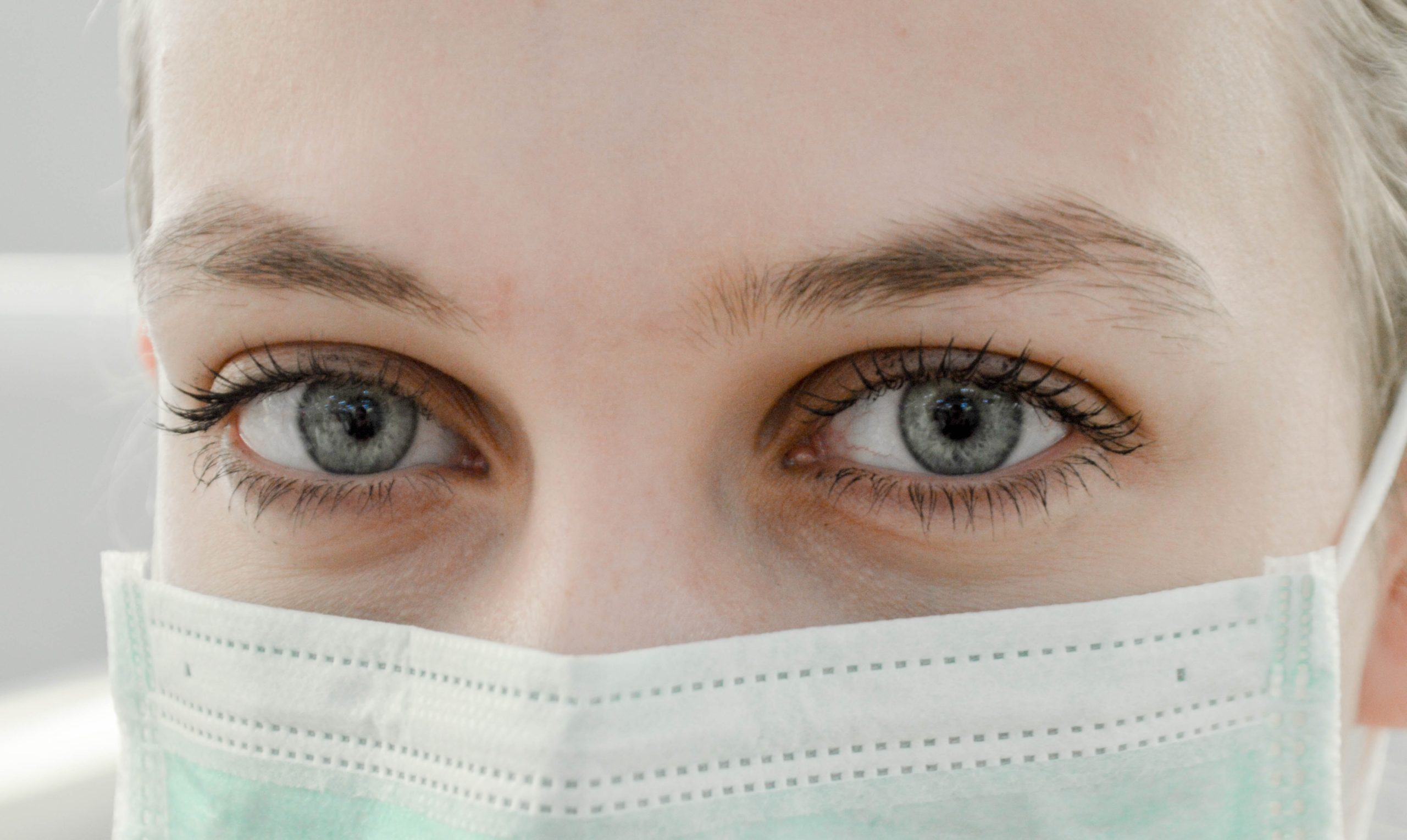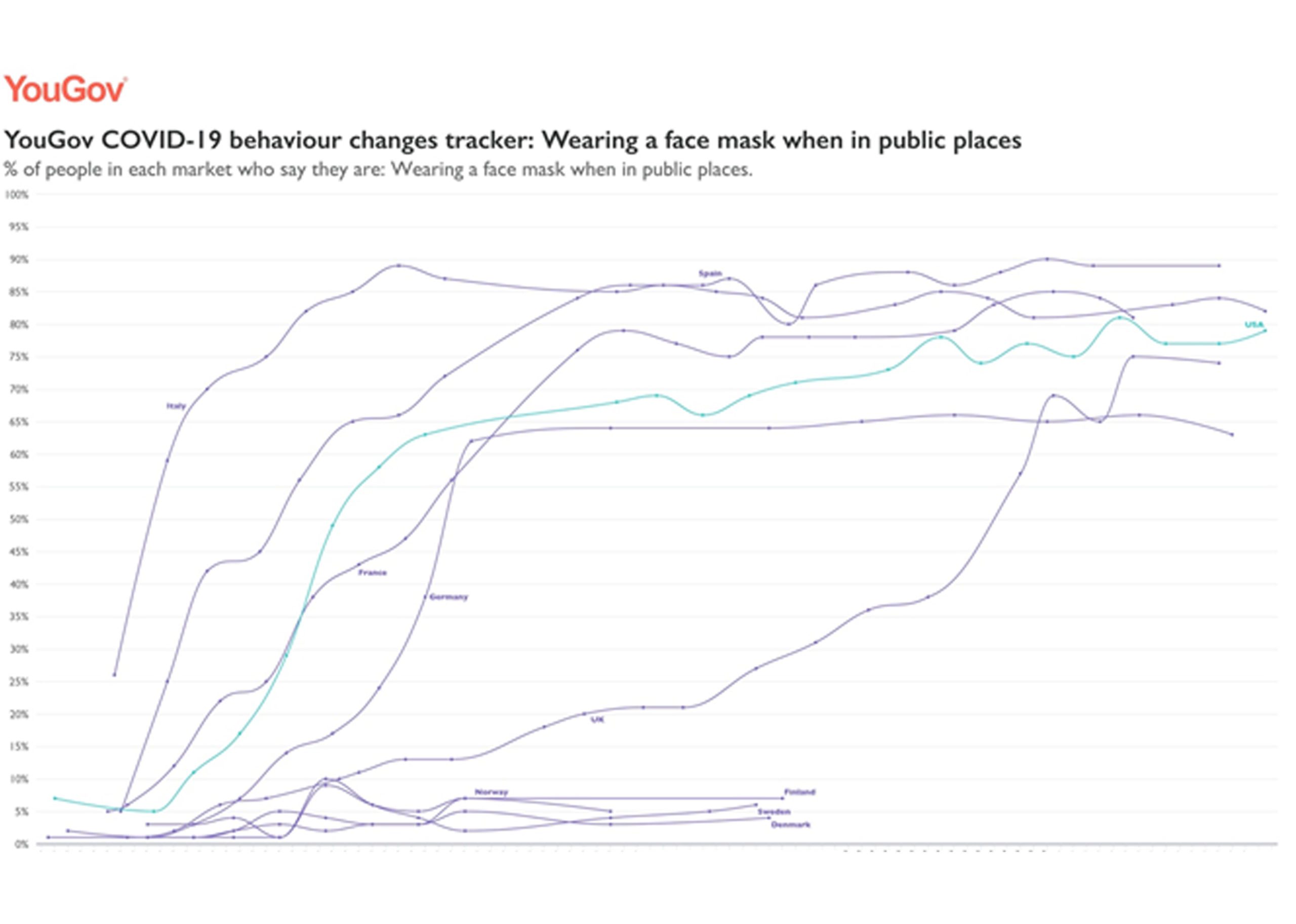Mask-Associated Dry Eye – Nathan Little
9th December 2020

Mandated facial mask wear has been proven in reducing the spread of the novel SARS-CoV-2 virus which causes Covid-19. However mask wear, while beneficial in reducing the spread of the disease, does have unintended outcomes for the ocular surface. Recent articles have referenced an increase in dry eye disease related to mask wear. This new phenomenon was designated as Mask Associated Dry Eye (MADE) and was first referenced by Darrell E. White MD in Ocular Surface Magazine in June, 2020.1 Given the continued global impact of Covid-19 and the increase in face coverings, a subsequent proliferation of mask related ocular surface disease and MADE could be on the horizon.
The UK government issued the compulsory requirement for face coverings back in July, 2020 which included an extensive list of indoor and outdoor circumstances.2 Due to government guidelines the UK saw an increase of mask wear in public places by 75% from March to September, figure 1 below.3 A recent poll from YouGov also indicated interesting data pertaining to the frequency of travel outside the home and the type of face covering worn, Figure 2. An estimated 94% of the population left the domicile in the past week and 90% wearing a mask/face covering during that time. Notably, 69% of Britons wore washable and reusable masks as part of their travel routine. While the numbers of Britons wearing a face covering is promising (over 90%) this increase and the requirement for new behavioral habits does not come without faults and a proliferation in poor mask hygiene.4 Figure 3 below shows that only 13% of all those wearing washable face coverings are cleaning them correctly, with 66% washing at a maximum every 2-3 wears (and 15% not cleaning the face mask at all). 4
Figure 1.
Figure 2.
Figure 3.
The apparent increase in mask time and the unsettling statistics on mask hygiene point to an upcoming increase in MADE and potentially other ocular surface diseases. Recent articles by Moshirfar et al. and Darrell E. White theorized that the increase in air flow from the dynamics of wearing the face covering may have an effect on the tear film stability. 1,5 The increase in air flow to the ocular surface from the mask updraft may result in air convection to the ocular surface increasing tear film evaporation.5 Feedback from different mask wearing cohorts described a distinct feeling of increased air flow upwards from the mask to the ocular region and the same patient cohort presented increased symptoms from the Ocular Surface Disease Index, including increased corneal staining and a reported increase in dry eye post cataract surgery.5 In addition to an increase in patient presentations for dry eye symptoms and increase in staff complaints of dry eye was also described.5 It can be hypothesized that in addition to increased air flow from updraft that in these cases of eye care provider (ECP) staff the use of tape or other adherent materials used to hold a mask in place may have affected the normal biomechanics of the lid.5 The prolonged effects of the mask wear have not been quantified extensively in literature but ocular surface irritation and even exposure keratopathy have been reported as a result of mechanical ventilation and or lagophthalmos in some instances.5
Given the clear lack of documentation of ocular surface disease and the alike related to mask wear and MADE it is safe to say that eye care providers (ECPs) will need to consider MADE and other ocular surface diseases caused by mask were moving forward. The prevalence of Covid-19 and mask wear will not diminish for the foreseeable future which may very well cause an increase in dry eye disease symptoms for patients, staff and even the ECP. In addition to dry eye symptoms, increased mask wear and the subsequent deterioration of the tear film may also pose a risk for increased transmission of Covid-19. This area of ocular surface disease is one to watch and may very well be a growing segment in the future.
By Nathan Little, Chief Strategy Officer for Sparca
- https://www.healio.com/news/ophthalmology/20200622/blog-a-new-coronavirusassociated-eye-disease
- https://www.gov.uk/government/publications/face-coverings-when-to-wear-one-and-how-to-make-your-own/face-coverings-when-to-wear-one-and-how-to-make-your-own
- https://yougov.co.uk/topics/international/articles-reports/2020/03/17/personal-measures-taken-avoid-covid-19
- https://yougov.co.uk/topics/health/articles-reports/2020/08/31/just-13-reusable-mask-wearers-are-washing-them-fre
- https://www.ncbi.nlm.nih.gov/pmc/articles/PMC7362770/




